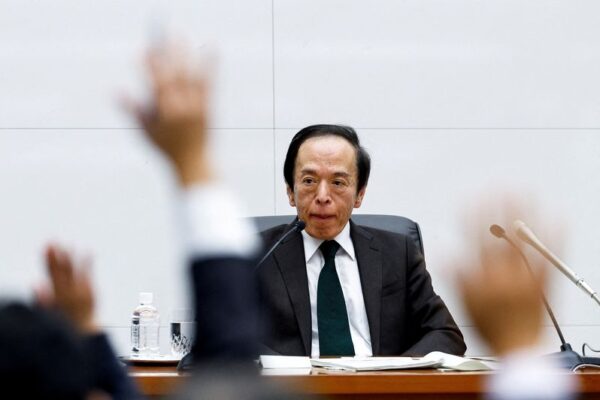South Africans face more interest rate hike pain as inflation sticks
© Reuters. FILE PHOTO: A view shows the logo of South Africa’s central reserve bank, at the reserve bank offices in Pretoria, South Africa, January 26, 2023. REUTERS/Siphiwe Sibeko JPM -1.04% Add to/Remove from Watchlist Add to Watchlist Add Position Position added successfully to:
Please name your holdings portfolio Type: BUY SELL Date: Amount: Price Point Value: Leverage: 1:1 1:10 1:25 1:50 1:100 1:200 1:400 1:500 1:1000 Commission: Create New Watchlist Create Create a new holdings portfolio Add Create + Add another position Close By Kopano Gumbi
JOHANNESBURG (Reuters) -South Africa’s central bank will likely extend its tightening cycle and push rates cuts further into the future amid countrywide power outages and currency weakness, analysts said, adding to inflationary pressures straining businesses and households.
The South African Reserve Bank (SARB) – which is facing a dilemma of how to keep a lid on inflation without further stifling already anaemic economic growth – has hiked its main lending rate by 425 basis points since November 2021.
But inflation continues to run hot.
The next rate decision is on Thursday, and a majority of economists surveyed by Reuters last week expect a 25 basis points (bps) hike to 8.00%.
But some analysts, like Nicolaie Alexandru-Chidesciuc at JPMorgan (NYSE:JPM), have ramped up their forecasts, now expecting the bank to deliver a 50 bps hike and predicting the first rate cut would not come until well into 2024.
“The risk of worsening electricity cuts as well geopolitical concerns after the U.S. ambassador claimed the country was not acting in a non-aligned manner in the Russia-Ukraine conflict have significantly impacted the currency,” said Alexandru-Chidesciuc.
The outlook faced by South African policy makers is at odds with other developing economies’ central banks, many of which have front-run the U.S. Federal Reserve in their hiking cycles and are gearing up to deliver cuts in the coming months.
This provides relief at a time when growth woes for the world’s top two economies – the U.S and China – dominate. Among major emerging markets, only Israel and Colombia have recently raised rates. Hungary on Tuesday started the first policy easing cycle in Europe.
SARB Deputy Governor Rashad Cassim acknowledged in an interview with Reuters on May 3 that rate hikes were unpopular in a low-growth economy but said the priority was managing inflation expectations. Annual consumer price inflation is running at over 7%, above the central bank’s target range of 3%-6%.
“We want to ensure that the depreciated exchange rate and (high) food prices don’t permeate into other parts of the inflation basket,” Cassim said.
“If we did nothing, (consumer) income is going to erode more and more. So maybe a little initial pain may benefit consumers in the medium to long run.”
South Africans were already facing rising prices after COVID-19 and the Ukraine war disrupted supply chains. The power crisis has added to pressure, as businesses, including food producers and retailers, spend more on alternatives such as diesel generators and pass on the costs to consumers.
The central bank estimates that rolling blackouts – which can last up to 10 hours a day – will add 0.5 percentage points to headline inflation in 2023.
The rand weakening more than 10% this year makes imports more expensive.
“With the rand’s substantial weakness and markedly higher production and retail costs coming from (power cuts), the risk to the inflation outlook on balance is still on the upside,” said Annabel Bishop, chief economist at South African lender Investec.
“We expect on balance that a 50 basis points hike is more likely … instead of a 25 basis points lift.”
CREDIT WORRIES
Credit demand has been rising as household incomes have not kept up with prices, economists said, and higher borrowing costs could increase indebtedness.
The rate of new defaults on credit cards in the fourth quarter rose 20% year-on-year and those on home loans 19%, according to a Eighty20/XDS credit stress report.
“Even if interest rates come down at least by 2025, we may see the consumer still battling with the price pressures they had to deal with now, and how they might have chosen to deal with them,” said Koketso Mano, senior economist at South African lender FNB.












 Bitcoin
Bitcoin  Ethereum
Ethereum  Tether
Tether  Solana
Solana  USDC
USDC  Lido Staked Ether
Lido Staked Ether  XRP
XRP  Toncoin
Toncoin  Dogecoin
Dogecoin